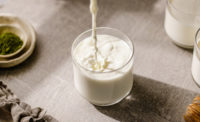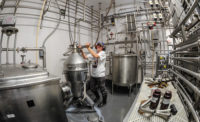A year ago, we were not concerned about sanitizing everything we touch. COVID-19 has since changed the world. The emphasis is on social distancing, hand washing, and cleaning and sanitizing any type of potential contact surface.
Those of us in the dairy industry, however, already knew about the importance of cleaning and sanitizing. We knew that the safety and shelf life of our dairy products are related to the cleaning and sanitizing of our equipment. Failure in these areas and can bring about lost sales and possibly the loss of business.
So how do we verify that our equipment is, indeed, clean?
Meticulously cleaned equipment starts with validated cleaning procedures. Equipment and environmental surfaces must be cleaned following set procedures known to remove soil and microbes from equipment.
Although modern dairy facilities rely heavily on clean-in-place (CIP) methods for cleaning of equipment, most facilities also employ clean-out-of-place (COP) and manual cleaning procedures. Proper cleaning using these methods requires validated procedures that utilize the proper time, temperature, velocity or scrubbing action, and chemical selection and concentration.
Validation proves that these four items remove the soil on the surfaces. Often these parameters are obtained from a facility’s chemical supplier.
Once you have developed the proper cleaning procedures, you then must religiously apply these procedures day after day. One cannot underestimate the need to educate cleaning personnel so they understand the proper procedures and the need to follow them. A record of who cleaned what — and when — is necessary for each cleaning event. Additionally, a record of chemical concentrations, temperature and time is needed. The pressure or velocity of the cleaning solution should also be recorded for CIP cleaning.
Time to verify effectiveness
Verification of cleaning effectiveness then can be accomplished in several ways. Your equipment and cleaning procedures will dictate what is best for you.
The easiest verification is to review those records created during the cleaning procedure; however, doing so will verify only that cleaning was conducted.
The second method is a simple visual inspection. This will verify that visual soil was removed and is often used as a part of a pre-operational inspection for equipment undergoing manual or COP cleaning. A flashlight or blacklight aids in the identification of residual soil on the equipment.
Microbial swabbing can be used to verify cleaning, too. While it’s an excellent method of evaluating environmental surfaces for pathogens, the complexity and time to obtain results make this procedure unsuitable for the verification of equipment cleaning.
More commonly used today is ATP testing, which measures residual organic matter left on the surface after cleaning. ATP is an enzyme that is present in organic matter, including milk and bacteria. The surface is swabbed with an ATP monitoring swab, and the swab is inserted into a luminometer. Results are obtained in seconds.
ATP is not a microbiologic test, but it does indicate the overall cleanliness of a surface, which is valuable when verifying the cleanliness of the surface.



